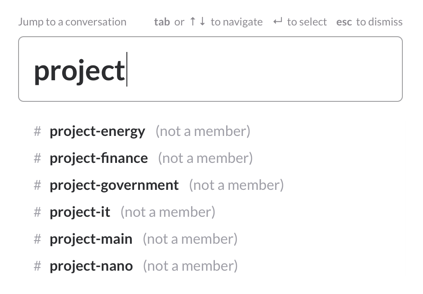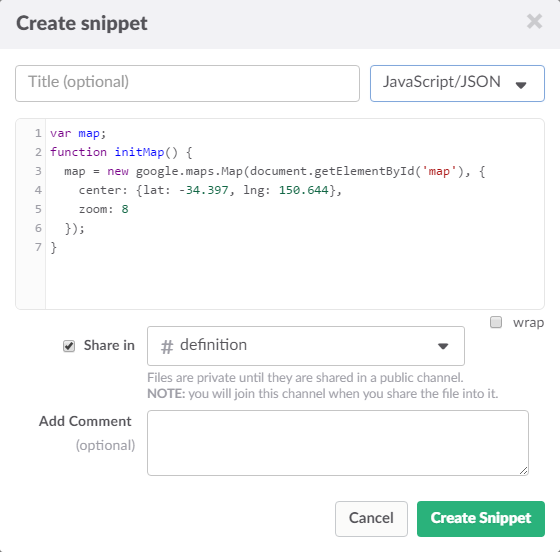 Slack has its own guidelines on how to make the best use of your team chatrooms for managing your projects, and they’re a great way to maximize your productivity if your teams is already using Slack to coordinate your team communications. We particularly find that having a policy to create project-based channels is a great way to ensure that the right people are always getting the right information on time. And if you have a consistent naming guideline, the search box can become a powerful database of everything that is going on in your company!
Slack has its own guidelines on how to make the best use of your team chatrooms for managing your projects, and they’re a great way to maximize your productivity if your teams is already using Slack to coordinate your team communications. We particularly find that having a policy to create project-based channels is a great way to ensure that the right people are always getting the right information on time. And if you have a consistent naming guideline, the search box can become a powerful database of everything that is going on in your company!

Source? Of course, Slack themselves. https://get.slack.help/hc/en-us/articles/218130338-Slack-for-project-management#apps-for-project-management
In fact, while the case for Slack may seem already redundant for American companies given the platform's soaring popularity and the power of its free version, many companies in different markets still haven’t heard of Slack, so it’s never too late to go over some of its pillars.
1. Familiarity of the design
Something I often hear around me is that people dislike Slack because they haven't invented anything. Well, you know, anybody familiar with the history of technology will debunk the romantic myth of originality: technology creates technology. New technologies, particularly successful ones, are combinations of already existing artifacts.
Feels familiar
-
So yeah, Slack’s repurposing of an IRC interface is not original, but at the same time it’s crazy brilliant because it goes back to the foundations of consumer satisfaction.
You can think about it like the free food and napping pods at Google’s offices transformed into a digital environment. Chats and texting feel leisurely, and that’s precisely the feeling you want to give your team when you want to motivate them to use a specific tool. Particularly if you have a young workforce, trying out the giphy command can be the best way to guarantee people open their Slack account every single day.

2. Cell phone reporting
Slack stands for “Searchable Log of All Conversation and Knowledge”. Although it looks like a chat, it is actually designed as a repository of information that you can search at any time.
Now imagine how powerful this can be for teams that have workers deployed on the field. On one hand, they can send useful information from their cell phones knowing that the app is a validated form of communication; on the other, project managers will spare time on data management and the enforcement of reporting tools.
3. An app environment for chatbots
The main one? You guessed it: while Facebook is driven by procrastination, Slack is driven by productivity.
The integration of third party applications follows its own patterns, starting with chatbots. Although the passion for chatbots has been heavily criticized by some as a passing fad, the truth is that they are a good example of simple products that do small things, but do them good. No team will have use for every app on Slack, but some of them are really powerful.
Slack doesn’t have a very targeted public. If you work in an office, you can enjoy it. However, these guys have made sure that they meet the needs of any technological firm. In fact, besides giving access to specific apps for developers that go from GitHub and Heroku, there’s a specific feature that allows to share lines of code.

All in all, the main reason why you want to be on Slack is that, whatever your core business is, you will find ways to save time, connect your team, and increase the effectiveness of your internal communications. At the end of the day, that translates into a more solid organization and better project management.
Did you know that ITM Platform also has it's own integration with Slack? If you want to check it out, click here.


